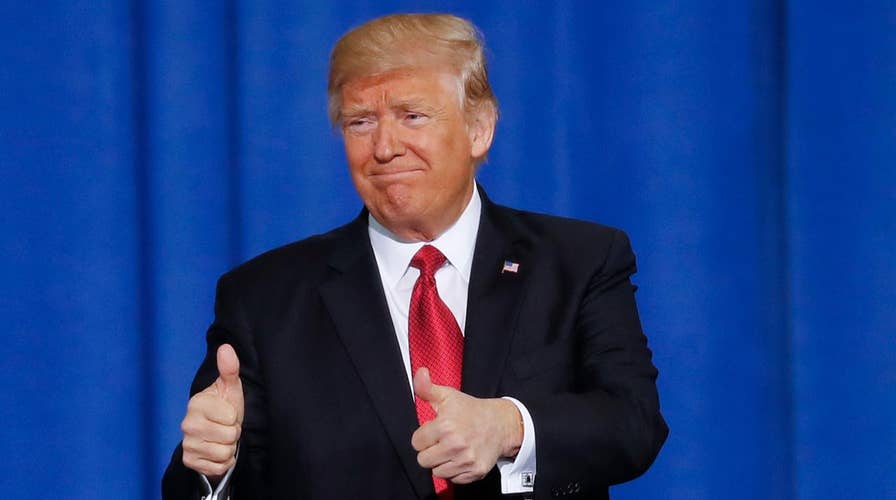Trump heads to Nashville to pitch health care replacement
House budget committee to vote on bill
Here’s what my patients want to know: If I get sick, will someone take care of me, and will I get better? If I have health insurance, will it get me the tests and treatment I need? If I pay a high premium, can it go toward lowering my deductible? If I choose a high deductible, will my premiums be lower? If I have pneumonia, will I have to wait to see my doctor behind someone who has a cold?
Will I have coverage but not access to the health care I need?
2010-2016
ObamaCare has failed on all fronts. While the state exchanges claim they insure close to 20 million people, including more than 11 million on Medicaid, they have provided heavily subsidized (up to 80 percent) policies with high premiums and high deductibles (up to $13,000 on a bronze plan) serviced by narrow networks of doctors offering restricted services.
In offices throughout the country, including mine, patients are reluctant to see their doctors until they’ve met their deductible — and then they immediately begin to overuse their insurance at every opportunity.
Each plan includes 10 essential health benefits you can get without paying a copay or deductible, including mammograms, colonoscopies prescription drug coverage, [SB1] STD screenings, maternity care, mental health services and treatment for alcohol, smoking and drug addiction.
It sounds great — until you consider how much you pay for services you may not need.
Premiums rose under ObamaCare because pre-existing conditions were covered and everyone had to share in paying for them.
In a country where 5 percent of the people consume 50 percent of the health care, it became necessary to convince young, healthy people to buy insurance or pay a penalty/tax. But it didn’t work.
In 2014, according to the Department of Health and Human Services, only 28 percent of enrollees in Affordable Care Act policies (not covered under their parents’ plan) were between 18 and 34 years old, and a whopping 45 percent of taxpayers who chose to pay a penalty or claimed an exemption (also not on their parents’ plan) were under 35.
Not only is it unethical to force people to buy insurance when it doesn’t guarantee a person’s actual health care (since you can’t force doctors to accept that insurance), but premiums and deductibles have risen out of control anyway.
2017
The American Health Care Act being debated in Congress does away with the unethical mandates, a very good place to start. The subsidies are being replaced by tax credits based more on age than income, ranging from $2,000 a year for those under 30 to $4,000 for those over 60 who earn up to $75,000 (the credit decreases incrementally for those who earn more than $75,000).
Tax credits can be a useful incentive if connected to an a la carte menu of health care choices, rather than the ObamaCare prix fixe menu of options you will rarely or never use. [SB4] But [SB5] the bill does not get rid of the essential benefits, it does not move those with pre-existing conditions to separate high-risk pools and it does not create a national marketplace — at least not yet. [SB6]
Without these changes, there is no reason to think outrageous premiums or deductibles will come down. The expanded health savings accounts in the proposed law will increase choice and make patients more aware of what they are paying for, but they should accumulate year-to-year and be transferable from one family member to the next.
I hope HHS Secretary Tom Price will stick to his promise to remove many of ObamaCare's onerous regulations. That will also increase choice and potentially lower premiums.
The bill also needs a catastrophic policy option — a low-cost, minimum-coverage policy that protects patients and hospitals from high bills for emergencies, including surgeries. Vaccines and addiction treatment represent public health needs and should also remain included.
But it is a stretch to say that the government is right to mandate no copayment for colonoscopies and mammograms, especially when they often lead to unnecessary biopsies that drive up costs.
Large health insurance companies use fear of sickness and death to drive sales, yet exercise and diet are still our best preventive measures. The last thing we need is for everyone’s premium to cover a useless weight loss consultation between an obese doctor and an obese patient.
All doctors would rather see a patient’s credit card than an insurance card. Incentivizing primary care training and paying primary care doctors more will ease the burden that ObamaCare has added at the doctor’s office.
Preserving the federally funded Medicaid expansion but converting it to a more efficient model led by Center for Medicaid and Medicare Services new head Seema Verma, with bridges to jobs and premiums for more substantial services, will keep millions with Medicaid from losing their coverage.
It’s that simple.

